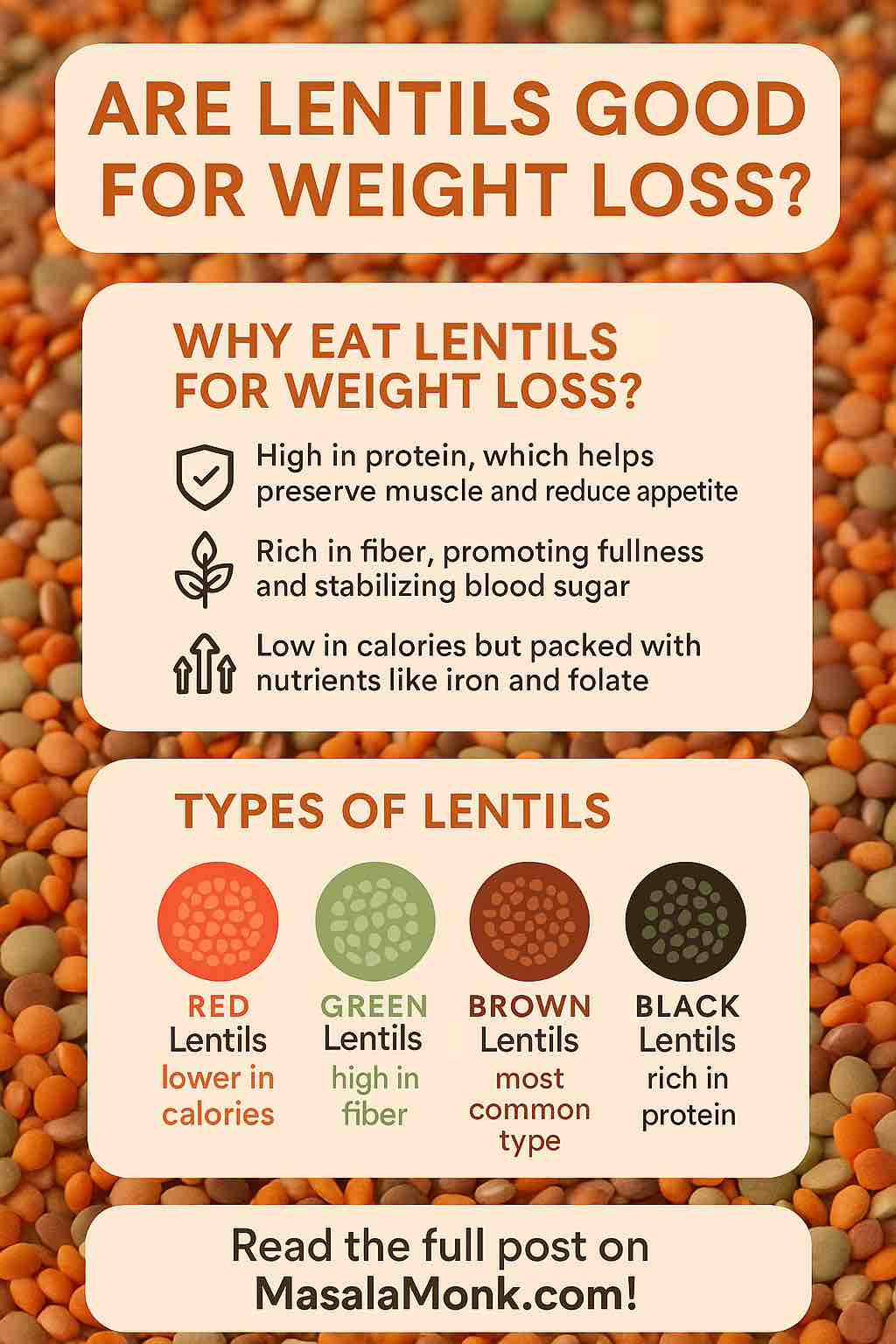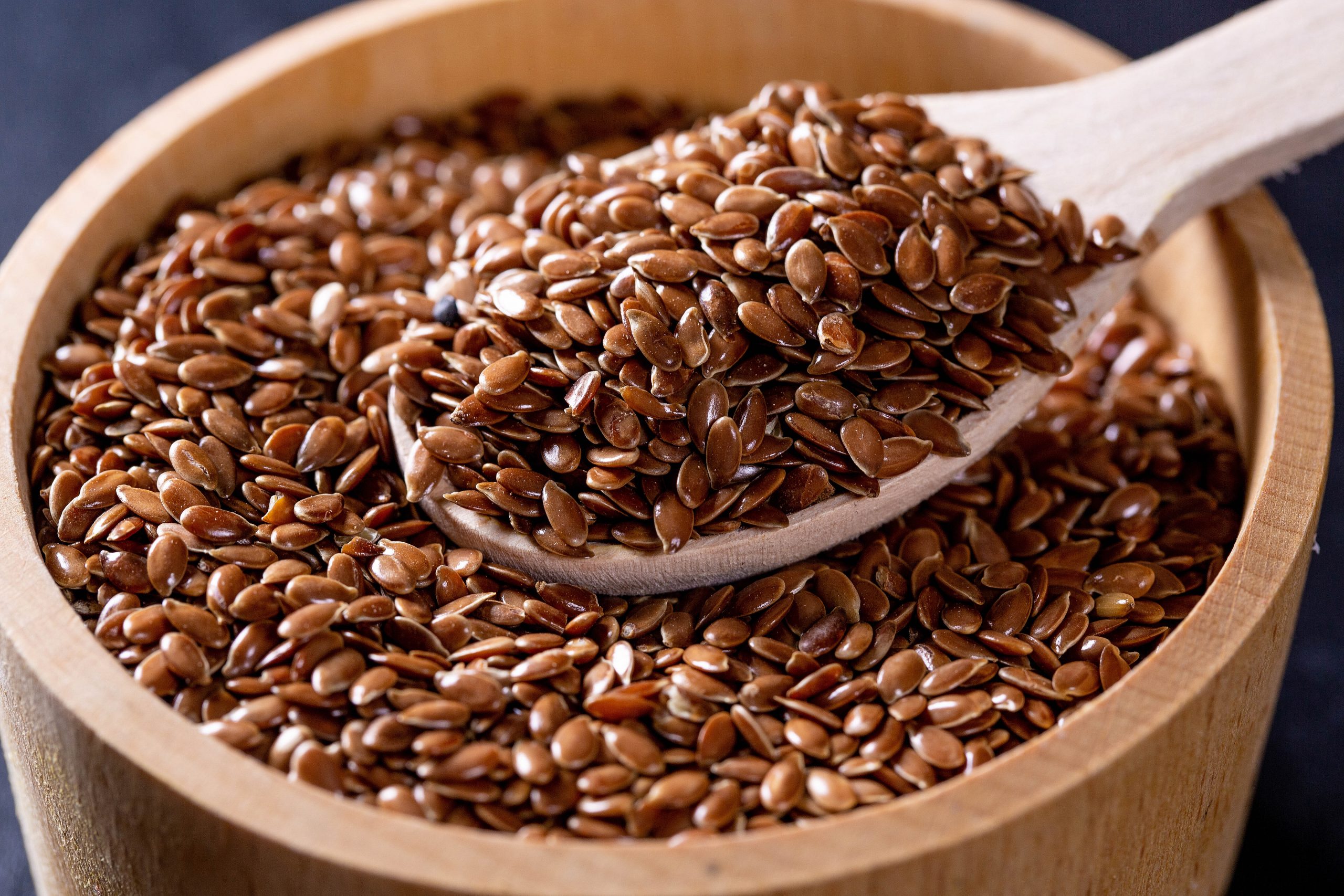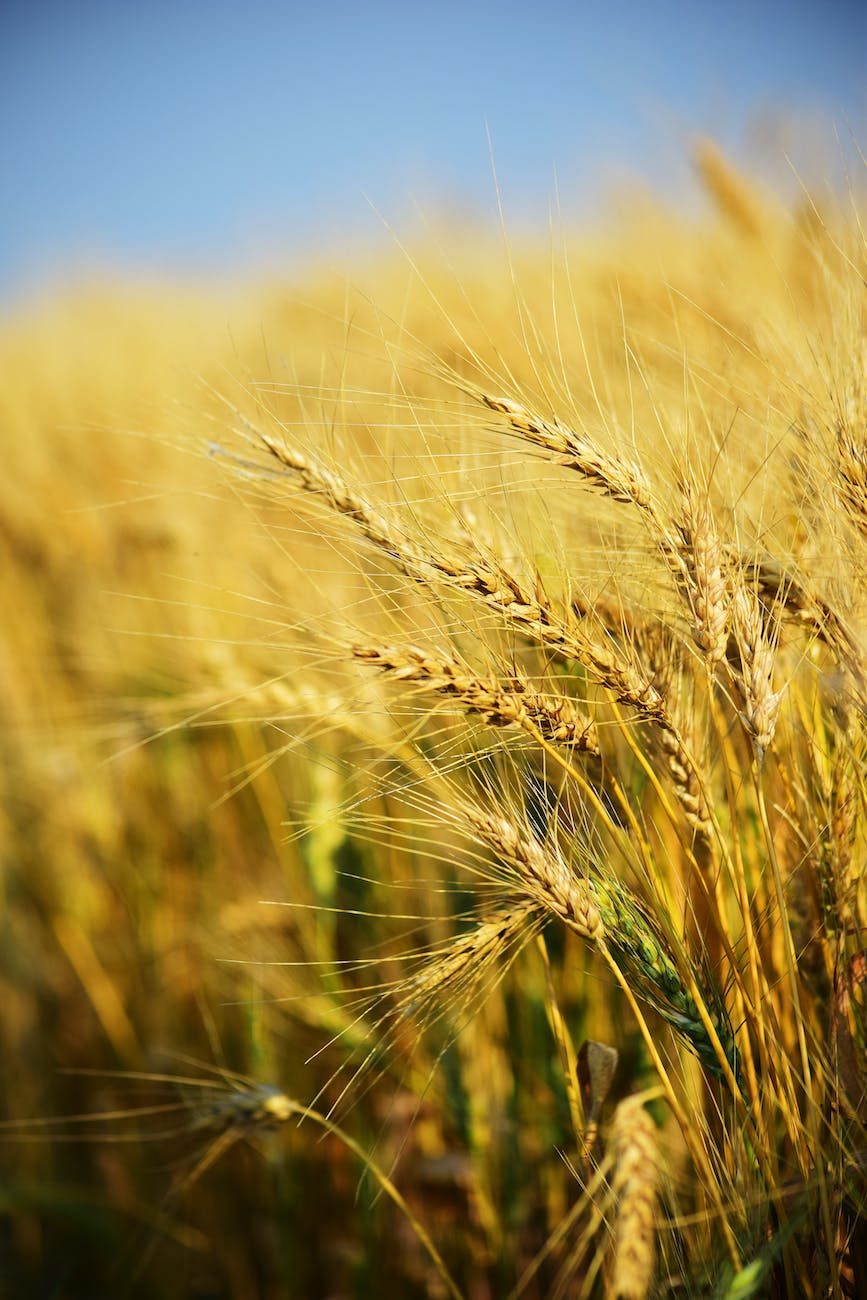
Lentils have been a dietary staple around the world for thousands of years, prized for their affordability, ease of cooking, and dense nutrition. Recently, lentils have gained special attention for their potential to support weight loss and fat reduction. If you’ve found yourself asking, “Are lentils good for weight loss?” or “Can lentils help you lose weight?”, you’re not alone.
This blog post will explore everything you need to know about lentils and weight loss—from the nutritional science to which types are best, how to cook and eat lentils for maximum benefit, and answers to common questions. We’ll also share some healthy, low-calorie lentil recipes and diet tips to help you make lentils a delicious part of your weight loss journey.
By the end, you’ll understand why lentils are considered a superfood for weight management and how you can incorporate them into your meals without worrying about unwanted weight gain.
Nutritional Profile of Lentils: Why They’re Great for Weight Loss
Before diving into the effects of lentils on weight, it’s important to understand their nutrition.
1. Calorie Content
Lentils are relatively low in calories compared to many other protein sources. For example, one cup (about 198 grams) of cooked lentils contains approximately 230 calories. This makes them an excellent option for those seeking to lose weight without feeling deprived.
2. High Protein Content
Protein is vital for weight loss because it helps maintain muscle mass while you’re losing fat, and it also promotes satiety. Lentils provide around 18 grams of protein per cooked cup, which is a significant amount for a plant-based source. This makes lentils a great alternative to animal proteins for vegetarians and vegans looking to manage their weight.
3. Fiber-Rich Food
One of the biggest benefits of lentils is their high fiber content. A cooked cup of lentils contains about 15 grams of dietary fiber. Fiber helps slow digestion, keeping you full longer and preventing blood sugar spikes. This reduces overeating and unhealthy snacking, both crucial factors for successful weight loss.
4. Low Glycemic Index
Lentils have a low glycemic index (GI), meaning they cause a gradual increase in blood sugar rather than a sharp spike. This helps maintain stable energy levels and reduces fat storage. Managing blood sugar spikes is important for those struggling with insulin resistance or type 2 diabetes, conditions often linked with obesity.
5. Rich in Micronutrients
Besides macronutrients, lentils offer a variety of essential vitamins and minerals such as:
- Iron: Important for energy production and oxygen transport.
- Magnesium: Supports metabolism and muscle function.
- Folate: Critical for cell repair and DNA synthesis.
- Potassium: Helps regulate fluid balance and blood pressure.
These micronutrients support your metabolism and overall health, which are foundational for effective weight loss.
Summary: Why Lentils Are Nutrient-Dense for Weight Loss
- Low-calorie food with 230 calories per cooked cup
- High in protein (18g) to promote fullness and muscle retention
- High fiber (15g) to improve digestion and control hunger
- Low glycemic index to stabilize blood sugar and energy
- Packed with essential micronutrients that aid metabolism
These factors combine to make lentils an excellent food for anyone looking to lose weight in a healthy, sustainable way.
Are Lentils Good for Weight Loss? What Does the Science Say?
The fundamental question remains: Are lentils good for weight loss? The answer is a resounding yes, backed by multiple studies and nutritional science.
How Lentils Promote Weight Loss
- High Satiety from Protein and Fiber: Protein and fiber both increase feelings of fullness. When you feel full longer, you naturally eat less. This reduces total calorie intake, which is essential for weight loss. Lentils combine both these nutrients in impressive amounts.
- Slow Digestive Process: Fiber in lentils slows digestion, stabilizing blood sugar and insulin levels. Stable insulin prevents fat storage and reduces hunger cravings, especially for sugary or processed foods.
- Improved Gut Health: Lentils contain prebiotic fibers that feed beneficial gut bacteria. A healthy gut microbiome is increasingly linked to better weight regulation and reduced inflammation.
- Low Caloric Density: Because lentils are high in water and fiber, they provide fewer calories per volume, allowing you to eat satisfying portions without excess calories.
Supporting Research
- A 2014 study published in the Journal of Nutrition found that participants who ate legumes (including lentils) regularly had better weight loss outcomes than those who didn’t.
- Other studies show that increasing dietary fiber intake by 14 grams per day is associated with a 10% decrease in calorie intake and nearly 4.5 pounds lost over four months.
Lentils vs. Other Protein Sources
Compared to animal proteins like red meat or cheese, lentils have lower fat content and no cholesterol, making them heart-healthy and weight-friendly. Unlike many processed weight loss products, lentils are natural, unprocessed, and affordable.
Which Lentils Are Best for Weight Loss?
There are several types of lentils, and while all are nutritious, some varieties may suit your weight loss goals better than others.
1. Red Lentils
- Cook quickly and become soft, making them ideal for soups and purees.
- Slightly lower in calories compared to other types.
- Good source of protein and fiber but with a softer texture.
2. Green Lentils
- Hold their shape better after cooking, great for salads or side dishes.
- Higher in fiber compared to red lentils.
- Slightly more protein per serving.
3. Brown Lentils
- Most common and versatile variety.
- Balanced protein and fiber content.
- Ideal for stews and curries.
4. Black Lentils (Beluga)
- Small, shiny, and rich in antioxidants.
- Higher protein and fiber density per gram.
- Excellent choice for those who want nutrient-dense lentils.
Which Lentil is Best for Weight Loss?
If your priority is maximum fiber and protein to support weight loss, green and black lentils edge out slightly ahead. But all lentils offer excellent benefits, so choosing based on taste and recipe preference is fine.
How to Eat Lentils for Weight Loss
The way you prepare and consume lentils can impact their benefits for weight loss. Here are some practical tips:
Portion Control
- Aim for 1 to 2 cups of cooked lentils per day to get adequate protein and fiber without excess calories.
- Lentils expand during cooking, so 1 cup dry yields about 2.5 cups cooked.
Cooking Tips for Weight Loss
- Avoid frying lentils or adding heavy creams, butter, or high-calorie oils.
- Cook lentils by boiling or pressure cooking and season with herbs, spices, lemon, or low-calorie sauces.
- Combine lentils with non-starchy vegetables like spinach, tomatoes, cucumbers, or bell peppers for volume and nutrients.
Eating Lentils Daily
- Incorporating lentils daily can help reduce hunger and stabilize blood sugar. Many people report better appetite control and sustained energy.
- Examples include lentil soups, salads, lentil tacos, and stews.
Healthy Recipe Ideas
- Lentil Soup for Weight Loss: Use vegetable broth, diced tomatoes, and spices like cumin and turmeric.
- Lentil Salad: Toss cooked lentils with chopped veggies, lemon juice, and fresh herbs.
- Lentil Tacos: Use seasoned cooked lentils as a filling with lettuce wraps or whole grain tortillas.
- Lentil Curry: Opt for tomato-based curry with spices and minimal oil.
Lentil Diet Plans and Tips for Weight Loss
If you want to structure your weight loss efforts around lentils, here’s how to create an effective lentil diet plan for weight loss:
Simple Lentil Diet Plan Example
Breakfast:
- Smoothie with protein and fiber (optional) or a small bowl of fruit and nuts.
Lunch:
- Lentil salad with mixed greens, cucumber, tomato, and a lemon-olive oil dressing.
- Add some grilled chicken or tofu if desired.
Snack:
- Fresh vegetables or a handful of nuts.
Dinner:
- Lentil soup or lentil curry (light on oil).
- Side of steamed vegetables or whole grains like quinoa.
Key Tips for Success
- Balance: Don’t rely solely on lentils; pair them with veggies, healthy fats, and lean proteins.
- Hydration: Drink plenty of water to help fiber do its job and avoid digestive discomfort.
- Variety: Rotate different types of lentils and recipes to avoid monotony.
- Exercise: Combine diet with regular physical activity for best fat loss results.
- Portion Control: Even healthy foods can cause weight gain if eaten in excess.
Can You Eat Only Lentils?
While lentils are nutrient-dense, eating only lentils is not advisable long-term because your body needs a wider range of nutrients from other food groups.
Nutrition Chart of Common Types of Lentils (per 1 cup cooked, ~198g):
| Type of Lentil | Calories | Protein (g) | Fiber (g) | Carbs (g) | Fat (g) | Iron (% DV) | Glycemic Index |
|---|---|---|---|---|---|---|---|
| Red Lentils | 230 | 17.8 | 15.6 | 39.9 | 0.8 | 37% | Low (21–29) |
| Green Lentils | 230 | 18.0 | 15.6 | 39.0 | 0.8 | 35% | Low (22–30) |
| Brown Lentils | 230 | 18.0 | 15.0 | 39.9 | 0.8 | 36% | Low (29–32) |
| Black Lentils (Beluga) | 180 | 24.0 | 17.9 | 30.0 | 0.7 | 40% | Very Low (~21) |
| Yellow Lentils (Split Moong) | 210 | 14.0 | 15.4 | 38.0 | 0.7 | 28% | Moderate (~32–35) |
| Masoor Dal (Split Red Lentils) | 230 | 18.0 | 15.6 | 40.0 | 0.8 | 37% | Low (21–29) |
⚠️ Note:
- Nutritional values can vary slightly by source, preparation method, and origin of lentils.
- %DV (Daily Value) is based on a 2,000-calorie diet.
- Glycemic Index (GI) estimates are approximate and vary depending on processing and how lentils are cooked.
Key Takeaways:
- Best for Weight Loss (Fiber + Protein): Black lentils (Beluga)
- Most Versatile: Brown and green lentils (hold shape well, good for salads and soups)
- Quickest Cooking & Best for Soups/Purees: Red lentils and Masoor dal
- Gentlest on Digestion: Yellow lentils (Split Moong)
Common Questions and Myths About Lentils and Weight Loss
Are Lentils Fattening?
No, lentils are low in fat and calories. They do not cause weight gain when eaten in reasonable amounts.
Can Lentils Increase Weight?
Weight gain happens if you consume more calories than you burn. Lentils themselves don’t inherently cause weight gain but watch portion sizes and preparation methods.
Are Lentils Healthy for Weight Loss?
Yes, lentils are one of the healthiest foods to aid weight loss due to their fiber, protein, and micronutrients.
Is Dal Good for Weight Loss?
Dal (lentil stew) can be excellent for weight loss if prepared healthily — low oil, with plenty of spices and vegetables.
How Much Lentils Should I Eat Per Day to Lose Weight?
About 1 to 2 cups of cooked lentils per day, spread across meals, is effective for most people.
Final Thoughts: Why Lentils Are a Weight Loss Superfood
Lentils combine all the key qualities that support weight loss:
- Low in calories yet nutrient-dense
- High protein to preserve muscle and reduce appetite
- Rich fiber to control hunger and stabilize blood sugar
- Versatile and easy to incorporate into many meals
- Affordable and accessible for most diets
By including lentils regularly in your diet—whether as soups, salads, curries, or snacks—you can enhance fullness, reduce overall calorie intake, and promote healthy fat loss without feeling deprived.











